Asustor AS6204T Braswell NAS Review
by Ganesh T S on November 5, 2015 8:00 AM ESTSingle Client Performance - CIFS & iSCSI on Windows
The single client CIFS and iSCSI performance of the Asustor AS6204T was evaluated on the Windows platforms using Intel NASPT and our standard robocopy benchmark. This was run from one of the virtual machines in our NAS testbed. All data for the robocopy benchmark on the client side was put in a RAM disk (created using OSFMount) to ensure that the client's storage system shortcomings wouldn't affect the benchmark results. It must be noted that all the shares / iSCSI LUNs are created in a RAID-5 volume.
The Asustor AS6204T provides acceptable performance in all workloads without particularly standing out in any particular one. That said, it manages to be in the top half of the performance pack in almost all of them.
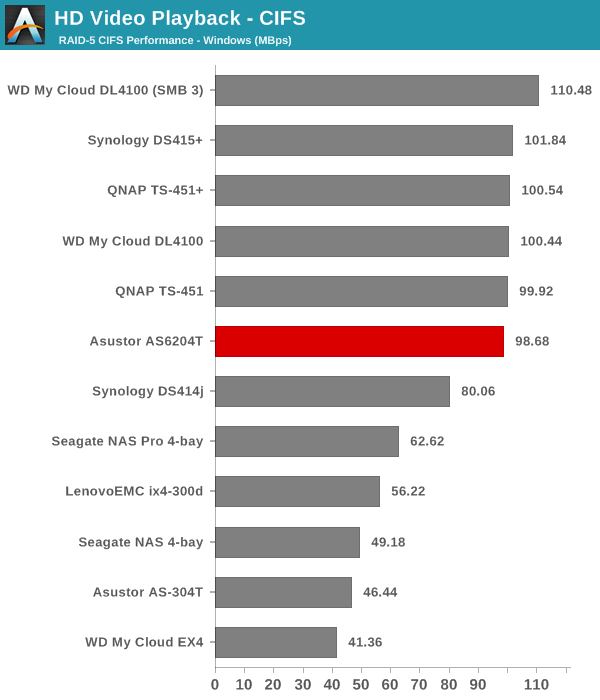
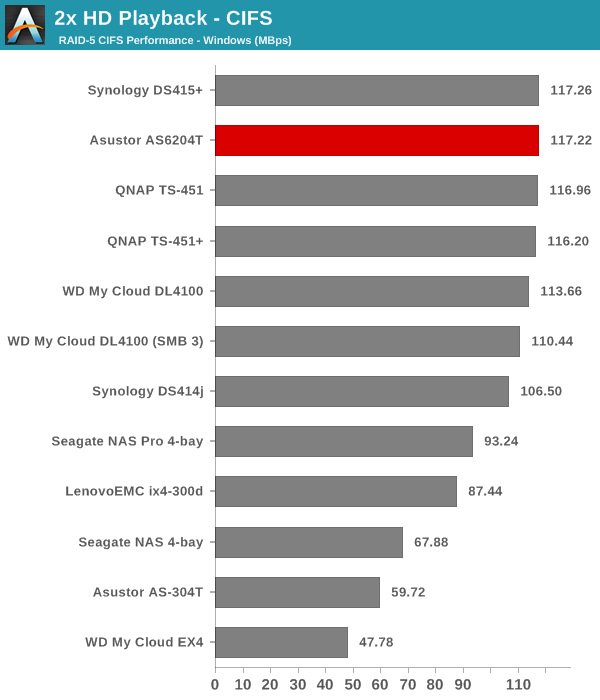
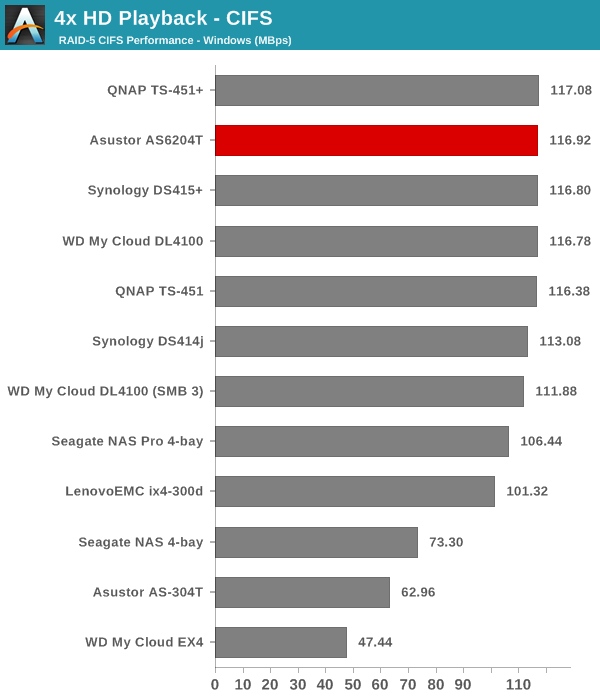
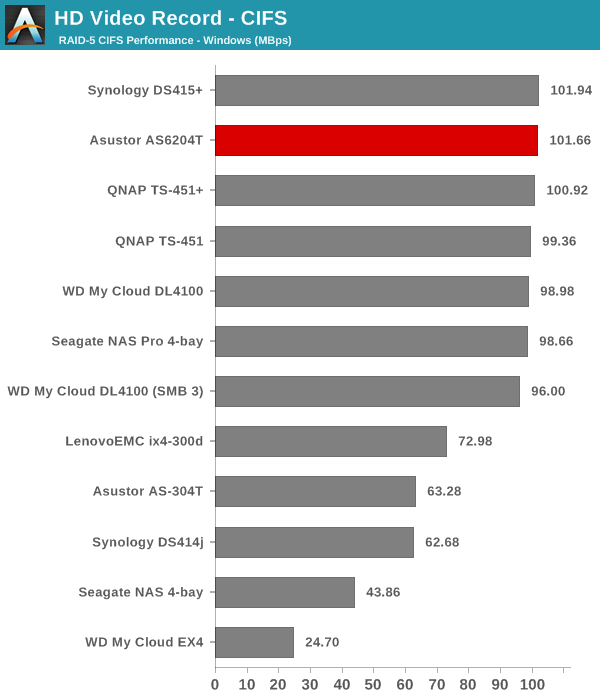
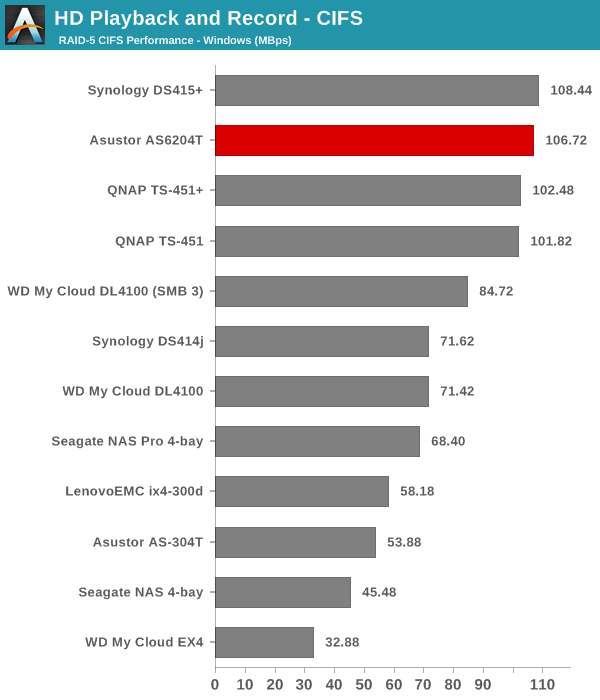
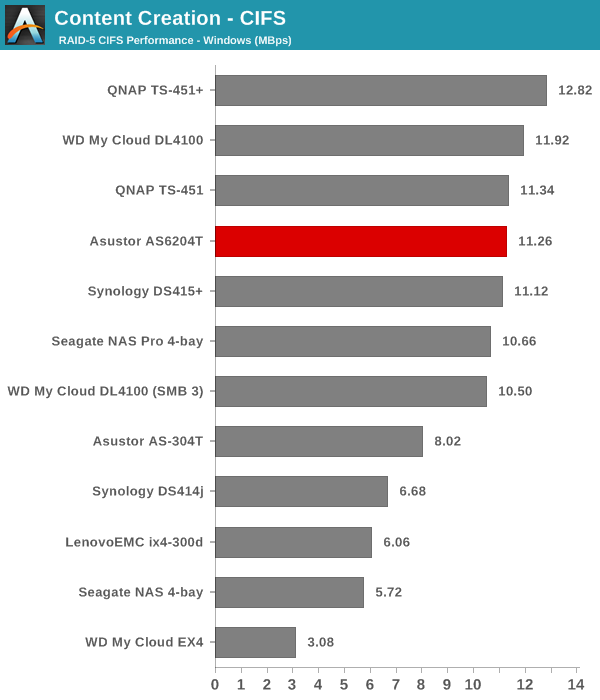
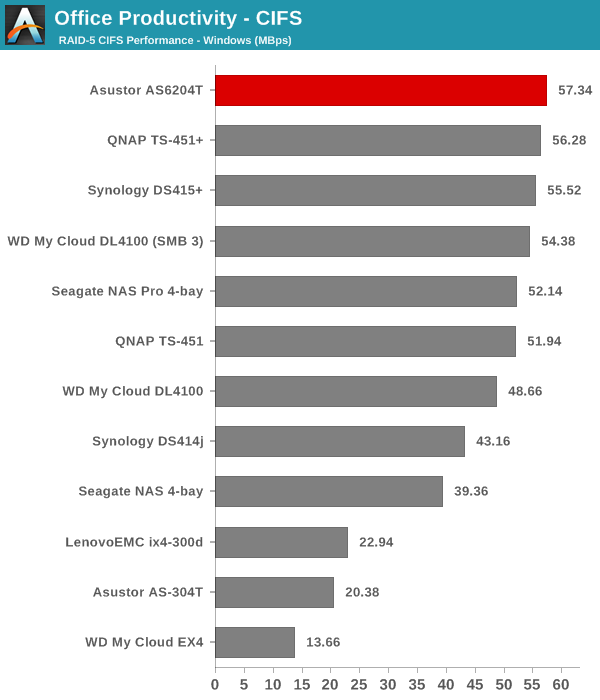
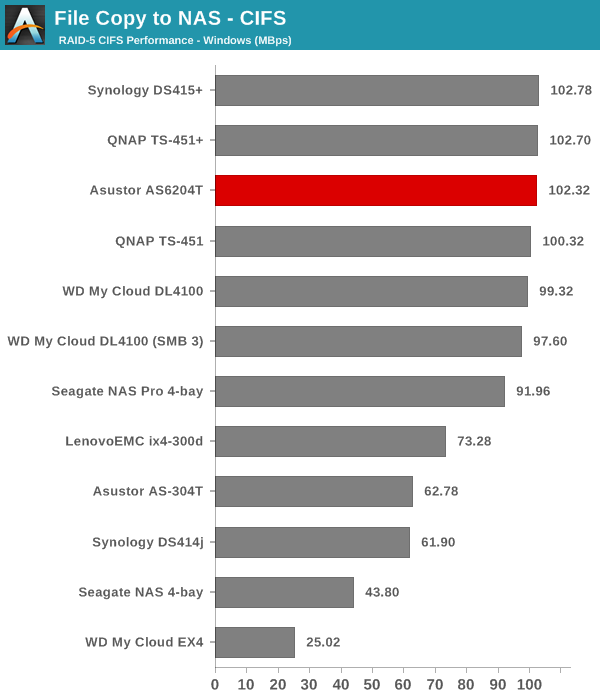
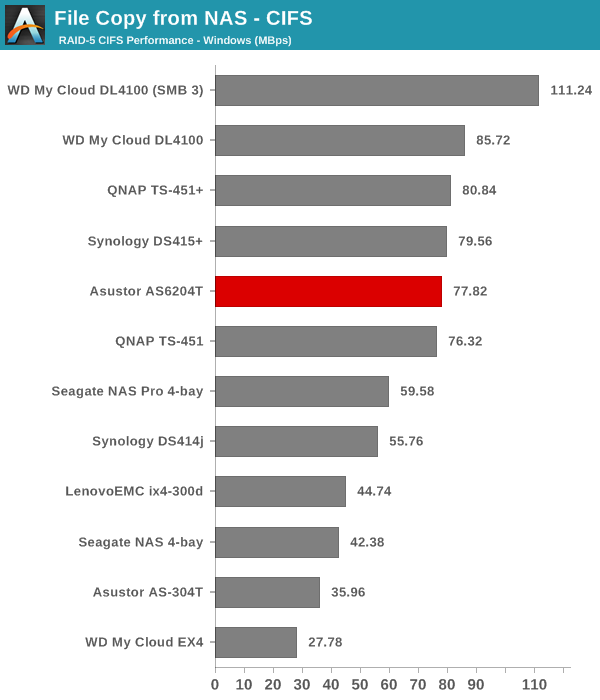
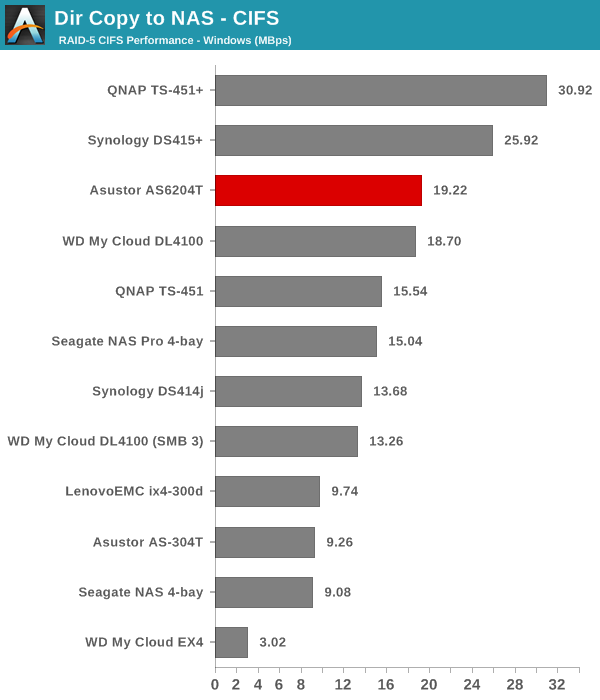
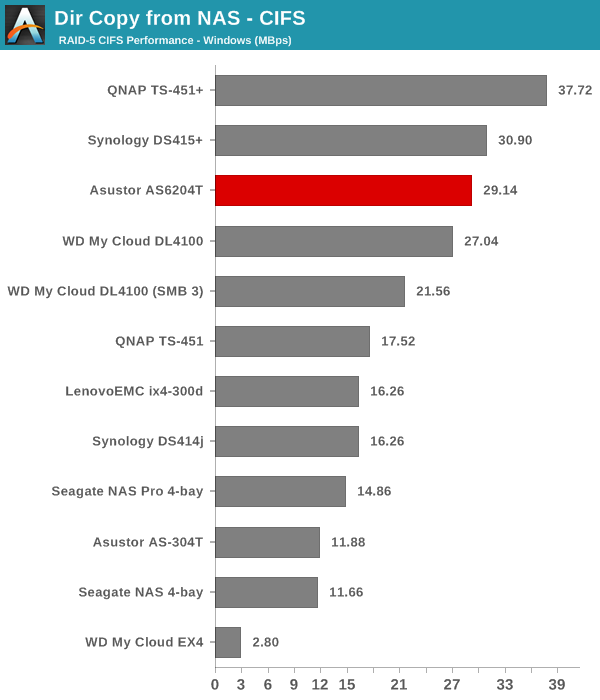

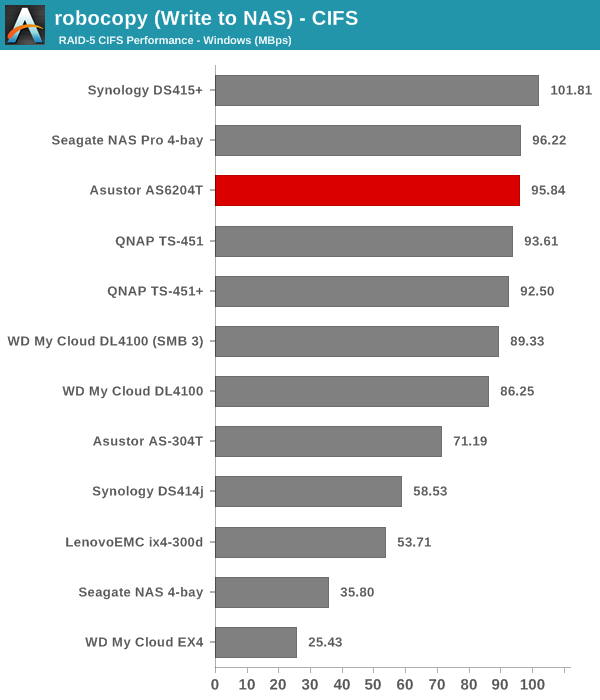

We created a 250 GB iSCSI LUN / target and mapped it on to a Windows VM in our testbed. The same NASPT benchmarks were run and the results are presented below. The iSCSI performance is slightly better than CIFS performance, but, again, nothing to make the unit stand out in the crowd.
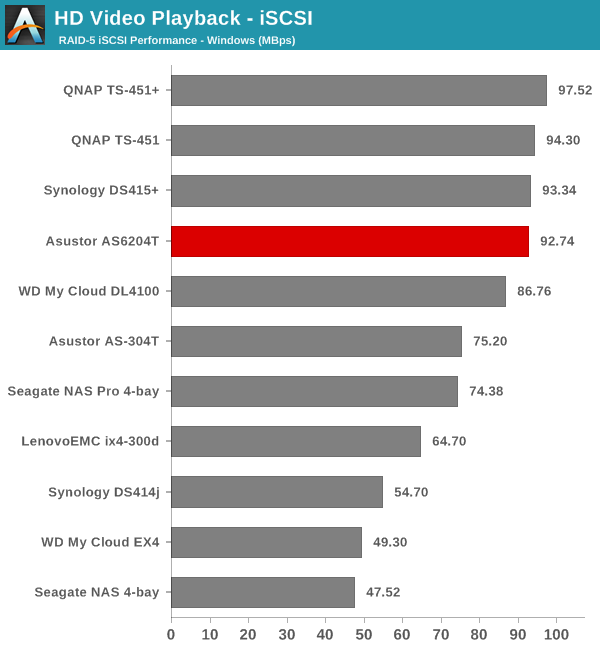
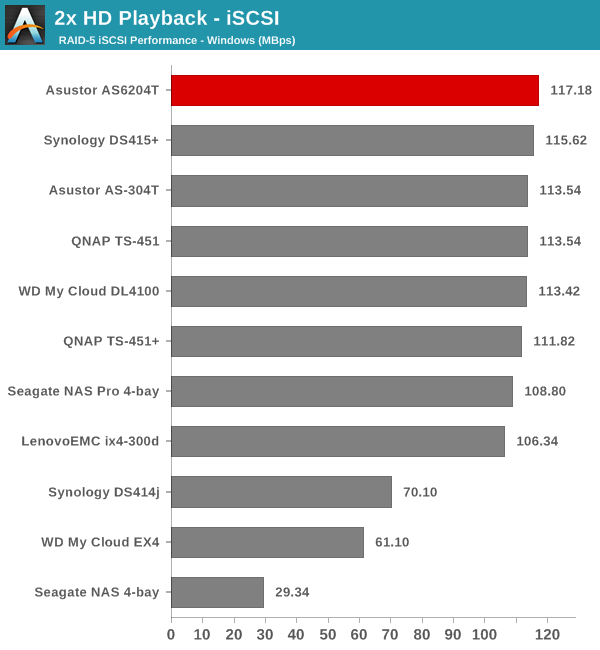
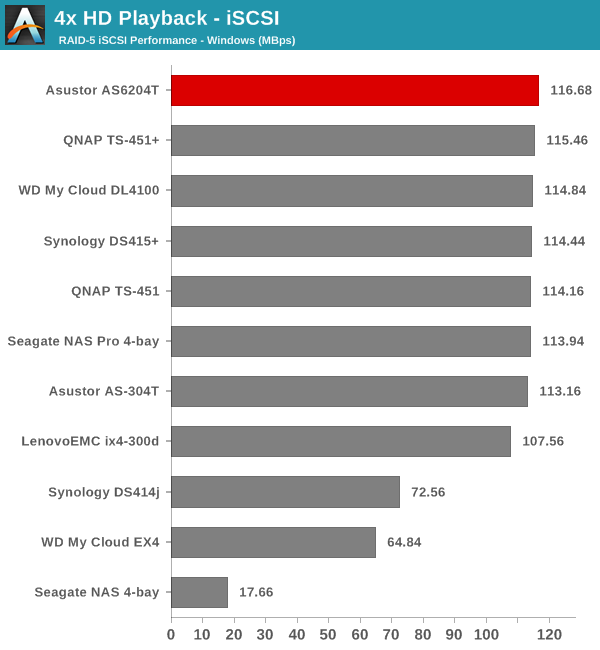
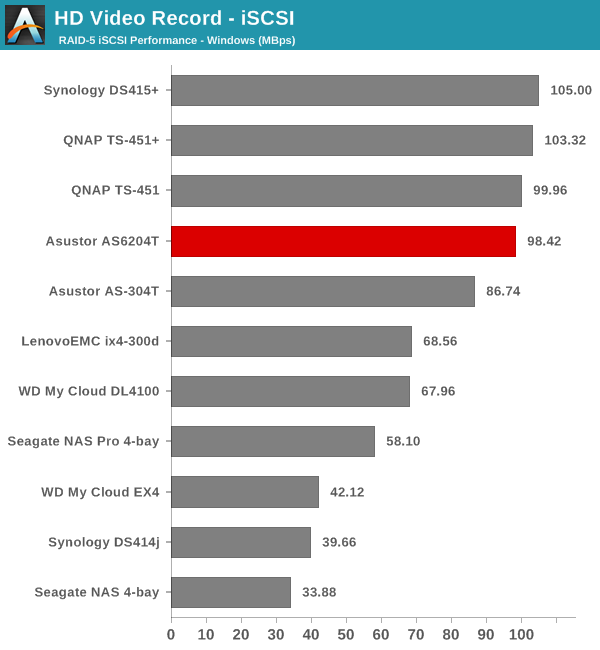
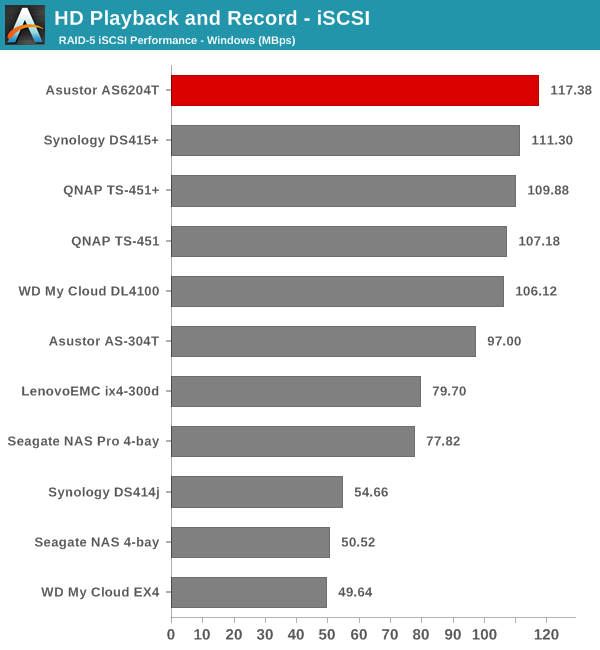
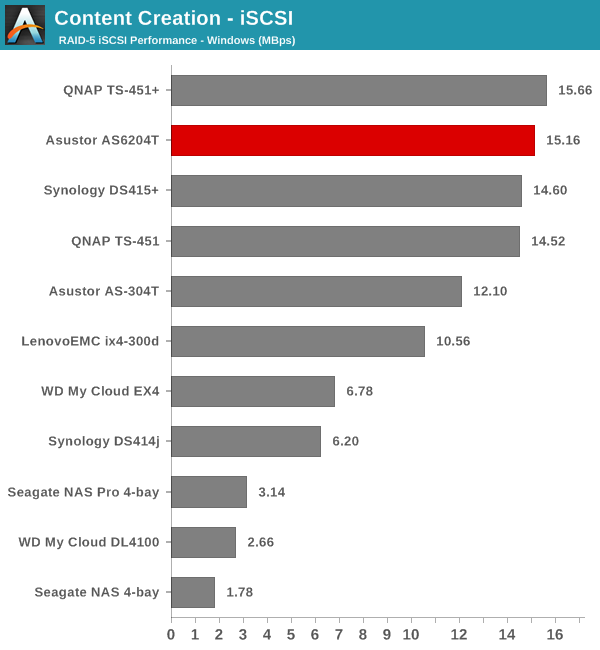

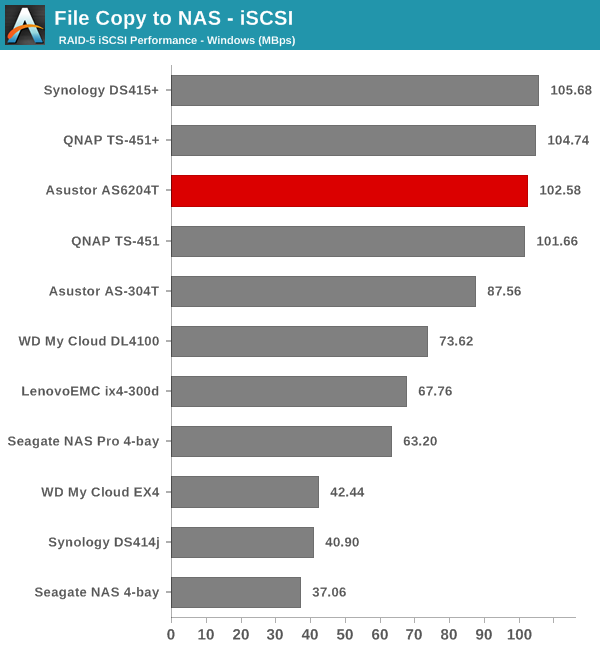


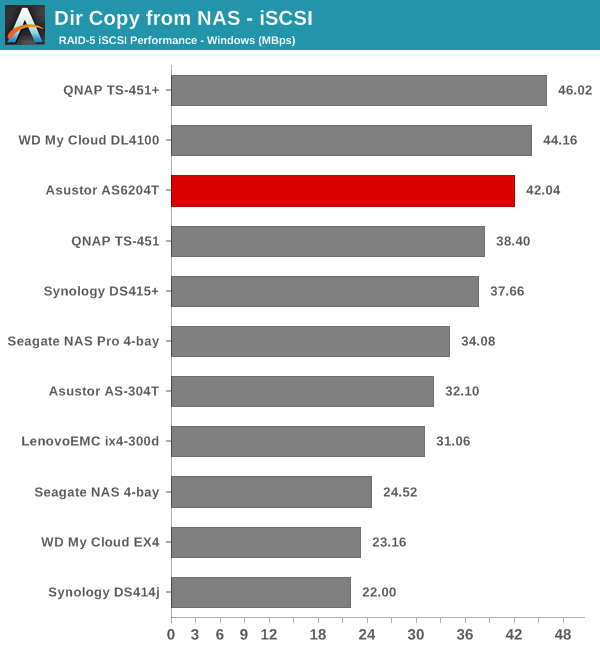

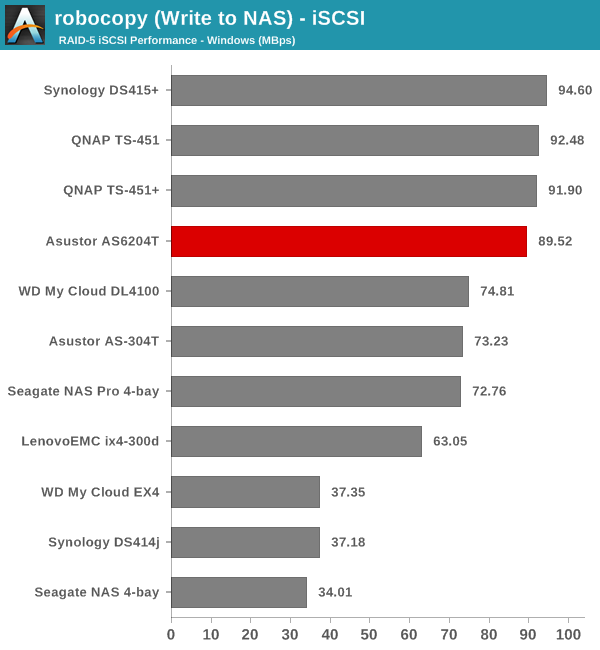
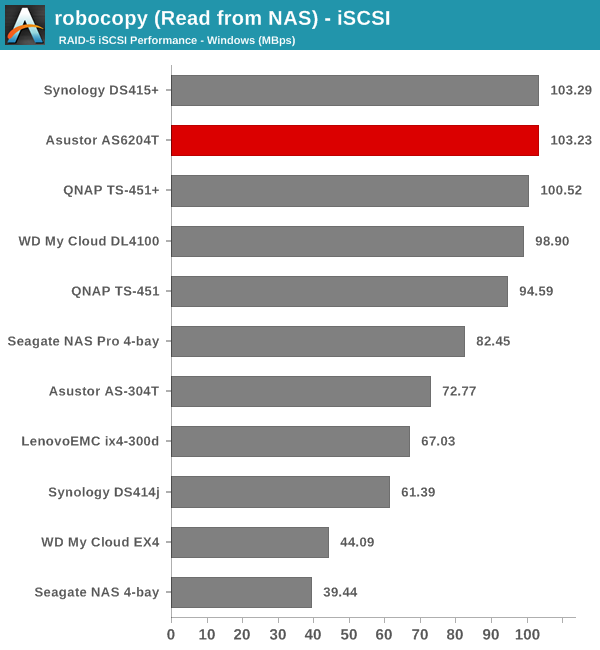
Both CIFS and iSCSI have scope for performance improvements. It has to be kept in mind that ADM (the Asustor OS) is still a fledgling compared to other mature operating systems such as QNAP's QTS and Synology's DSM. The important takeaway here is that the system provides acceptable performance for all the workloads.










29 Comments
View All Comments
Der2 - Thursday, November 5, 2015 - link
Nas life.zeeBomb - Thursday, November 5, 2015 - link
I have heard a lot about these surverlliance stations for quite some time now...appears to be the next big thing. Thank YOU for delivering these results!asendra - Thursday, November 5, 2015 - link
I'm hoping Sinology releases in 2016 a 4bay braswell NAS, a DS416+ if you will, hopefully with a N3700. They have already announced some 2016 models with braswell, just not the ones I want.I would buy the current DS415+, but because I'm in no need of one right now, I just hope they get to it before I need to make the purchase.
galfert - Thursday, November 5, 2015 - link
I think the DS716+ is the device to get this year. No need to wait for a DS416+. If you need more than two drives you can get the 5 bay expansion model for the DS716+. That is why it is called a DS7xx+ model...because you can have 7 drives. So it is better than a DS4xx model which can't support the expansion module.For me the DS716+ is the device I've been waiting for. Powerful Intel CPU, Expandable RAM, Expansion module support, Transcoding of video, virtualization support, Hardware Encryption support. It has everything I need. Previously you had to compromize. I have a DS214play and a DS713+ and the DS716+ can replace both of them.
asendra - Friday, November 6, 2015 - link
You know, I hadn't considered that option. It would be a more expensive one, but it could work, in fact I could use a dx213 instead, wich gives me plenty storage for my needs.If when I need to buy one this next year they haven't released yet the new 4bay braswell ones, I might go with this option instead of the older ds415+.
Another thing I wanted to wait for so I could see how it develops It's Btrfs support.
DanNeely - Thursday, November 5, 2015 - link
Is the rebuild time graph showing numbers in seconds? Hours would be a lot more immediately meaningful. /3600 isn't a particularly easy mental computation.romrunning - Thursday, November 5, 2015 - link
Your article says: "Their Braswell lineup consists of four models, with each model name following the pattern AS6X0YT, where X (1 or 2) refers to the number of cores in the Braswell SoC in the model and Y (2 or 4) refers to the number of bays."Yet the Asustor AS6204T has 4 cores. So by your definition, it should have been named the "AS6404T".
So it sounds like your definition should be updated.
romrunning - Thursday, November 5, 2015 - link
Forget the above - the wording isn't as clear. I thought you were saying it was a direct relationship where the number = amount of cores. It could have been written that the second numeral denotes whether the CPU is dual-core (X=1) or quad-core (X=2).romrunning - Thursday, November 5, 2015 - link
This also reminds me - with today's advanced CMS/commenting systems, why can't we edit or delete our own comments on Anandtech??DanNeely - Thursday, November 5, 2015 - link
Which editor/reviewer do you want to furlough to hire a web developer to replace the comment system?